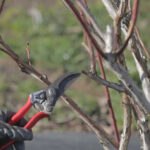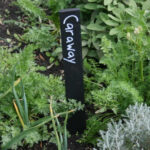I’ve dealt with fungus gnats in my indoor and outdoor garden before. While they didn’t do a lot of damage indoors, they decimated my outdoor sprouts during a particularly rainy spring season. These dudes may not have the strength in numbers that other pests do, but they can do damage quickly.
So controlling fungus gnat populations is key. They go for potted plants and feed on organic material – plant roots, and root hairs too. Overly moist soil is one of the attractants for these creepers. But there are others.
Adult fungus gnats need to be controlled to control fungus gnat larvae because their feeding isn’t the end of fungus gnat problems. They can also create infected plants as they spread fungal diseases – another reason it’s important to control them.
Subscribe to the Epic Gardening Podcast on
Fungus Gnat Overview
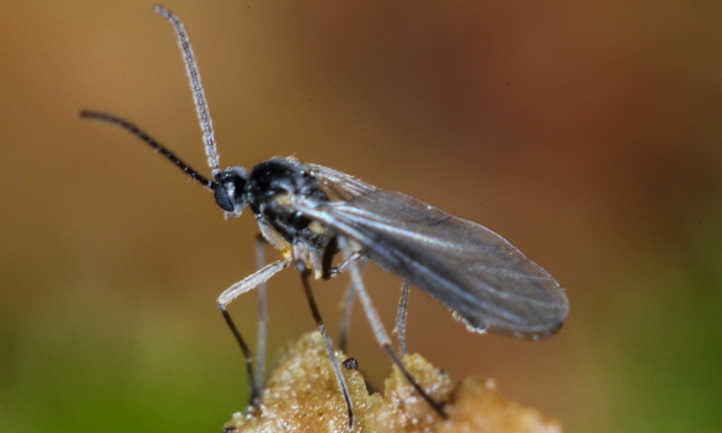
| Common Name(s) | Fungus gnats |
| Scientific Name(s) | Multiple, but the dangerous ones to plants are Sciaridae family spp. |
| Family | Sciaridae |
| Origin | Worldwide |
| Plants Affected | Indoor/nursery/greenhouse plants, some outdoor plants. Particularly susceptible are plants such as carnations, African violets, geraniums, and poinsettias, but they can strike any weakened plant in the right conditions. |
| Common Remedies | Hydrogen peroxide soil drenches, neem oil, pyrethrin, beneficial nematodes, Bacillus thuringiensis var. israelensis |
What Are Fungus Gnats?
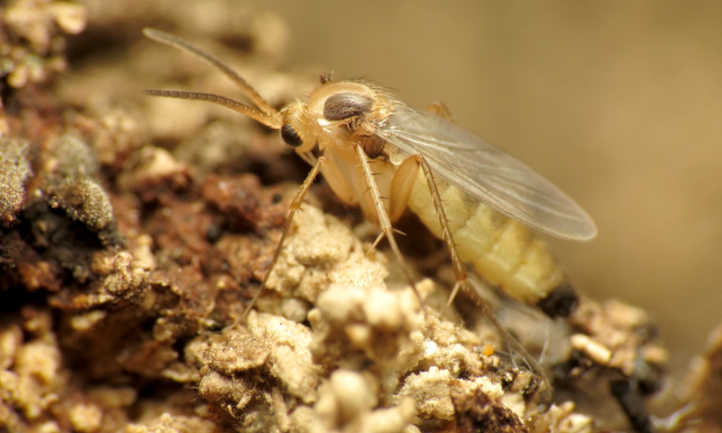
If you live in a temperate or tropical area, you’ve most likely seen insect pests called fungus gnats before. They’re small flies that infest soil potting soil, any container media, and other organically decomposed sources and materials. Fungus gnat larvae feed on fungi and plant roots in soil and organic matter. They’re a problem in commercial greenhouses, houseplants indoors, and potted plants. Adult fungus gnats tend to emerge from indoor plants when warmer temperatures occur in spring and summer. I’ve personally dealt with the indoor version of fungus gnats, commonly known as fruit flies.
Adult fungus gnats have a similar appearance to that of mosquitos because they are weak fliers. They have long legs and long antennae that are longer than their head. These long antennae distinguish them from one of their look-alikes, robust short flies who are like fungus gnats but are strong fliers. There are a few species that reach up to ½ inch long, while most adult fungus gnats are 1/16 to ⅛ of an inch long. Their wings are clear and grayish, and the Bradysia species has a characteristic y-shaped wing vein.
Types of Fungus Gnats
There are six different families of insects that make up the broader category of fungus gnats. These include the Sciaridae, Mycetophilidae, Ditomyiidae, Bolitophilidae, Diadocidiidae, and Keroplatidae. Most fungus gnat species are not harmful to our gardens, but the dangerous ones are in the Sciaridae family, especially those in the Orfelia and Bradysia species.
While adults don’t cause any lasting damage, the fungus gnat larvae of that family will move on to plant roots once their preferred foodstuff is gone. The larvae chew holes in the roots and cause yellowing, wilting, and even plant death in large numbers. Not only do they damage roots, but the Sciaridae can spread disease. Since their preferred food is fungal growth, they easily pick up spores from infected plants or soil and spread diseases.
Fungus gnat adults are often confused with mosquitos as they look similar in shape, but are much smaller. These tiny black flies rarely get any larger than an eighth of an inch long. The larvae themselves grow a bit larger than the adult gnats. Fungus gnat larvae have a black, shiny head with a white to clear body that can reach almost a quarter inch in length. They’re hard to locate because they tend to remain under the soil’s surface, out of view. They may, however, make a shiny trail on the soil surface of heavily infested plants.
Life Cycle of Fungus Gnats

The life cycle of the fungus gnat is made up of four stages: egg, larvae, pupae, and adult. Adult fungus gnats lay about three hundred eggs in their short lifespan. They typically live for about a week as adults, so they make the most of their time! Adults lay eggs in rich and fertile, moist soil at the base of house plants on the soil surface.
About four to six days after the eggs are laid, the gnat larvae emerge. These larvae are extremely tiny at first. During the roughly two-week period in which fungus gnat larvae grow, they rapidly increase in size by eating their way through organic matter in the soil. Once they’ve achieved maximum larval growth, there will be a 3-4 day pupal phase. The pupae will be hidden under the soil’s surface, and when the fungus gnat adult emerges, they start laying eggs again.
Because of this quick life cycle, multiple generations of fungus gnat are often born in quick succession as larvae feed. Subsequently, overlapping generations of adults emerge from the soil surface. Therefore, many stages of the life cycle may be present at any given time. Not only do you need to get rid of the annoying gnats themselves, but you need to deal with the larvae and find a way to sterilize the eggs before the eggs hatch.
Identifying Fungus Gnat Damage
Fungus gnat adults don’t do much direct damage to plants. It’s the fungus gnat larvae that are most damaging. A fungus gnat infestation involves damaged roots that stunt plant growth, especially in young plants. In houseplants that have too much moisture in their potting soil, high populations of fungus gnat adults and larvae are associated with the death of plant matter. Before that, it’s difficult to tell whether or not the issue is feeding larvae or overwatering infections by fungi, or generally unhealthy roots.
Fruit flies don’t cause much damage outdoors – though they did for me in that one freak spring that wouldn’t stop raining. More often they infest houseplants or potted plants that are kept indoors or in a greenhouse. Mixes that contain a lot of coco coir or peat moss are prime environments. Sod farms are another area where fungus gnat adults can do their thing and proliferate.
Fungus Gnats as Disease Vectors
Yes, fungus gnats damage plants, but it’s important to kill fungus gnat larvae and adults because they can carry diseases. Those recovering from fungus gnat problems still face the risk of infections. Fungus gnat larvae can spread fungus spores that are dropped by adult gnats to your plant’s roots, possibly causing a number of common plant diseases. The most commonly transferred diseases include black root rot, Pythium blight, Verticillium wilt, Botrytis blight, and Fusarium wilt.
As a precaution, treat any affected plant and those in the area with a copper fungicide a day or two after pesticide application. This ensures that if your plant had contact with potentially dangerous disease fungi spores, they won’t contract the disease. A root drench is more effective than spraying the plant’s foliage, as that’s where damage would be done.
Controlling Fungus Gnats
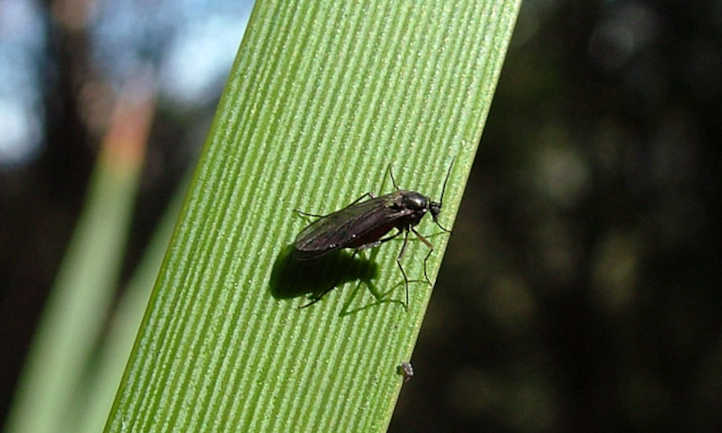
So, fungus gnats have attacked your African violets? Well, let’s talk about modes of controlling adult flies and larvae too. Here, we recommend you use an integrated pest management strategy to cover all your bases and protect your houseplants and greenhouse occupants for good.
Organic Fungus Gnat Control
Interestingly enough, a common household item is one of the top recommendations that I have for controlling these pests. Hydrogen peroxide (the standard 3% topical variety) can be used as a soil drench.
Mix one part peroxide with four parts water, and pour it through the soil at the root zone until it begins to come out of the base of the pot. The peroxide kills fungus gnat larvae on contact.
Neem oil is also an effective soil soak to combat fungus gnat larvae. Dilute the oil with water per the manufacturer’s directions and directly drench the soil at the roots of the plant. You can also spray the upper portion of the plant to keep adult gnats at bay.
Concentrated azadirachtin naturally occurs in neem oil. It’s safe in hydroponic use as well as in greenhouses, gardens, and indoors. Use it per the manufacturer’s directions in the same way you would use neem oil.
Pyrethrin sprays are also effective against fungus gnats and their larvae. To use pyrethrins, lightly mist all plant surfaces and the top of the soil. You don’t want the plants dripping wet, a thin mist will be enough. If there are fungus gnat larvae in the soil, spray the soil directly where adults typically rest to thoroughly moisten the top, then avoid overwatering. Let the soil dry to at least a 2″ depth. Reapply these in three to four weeks until the problem has subsided and the insects are gone.
A predatory mite of the Hypoaspis miles species preys upon adults and larvae. It also attacks other insects like thrips and springtails, which can be a nuisance in the garden or greenhouse. These are best employed outdoors or in greenhouses as single specimens are harder to treat.
So as you can see, there are many biological control agents to choose from when it comes to getting rid of fungus gnats. Apply insecticides in conjunction with good cultural practices and prevention methods and you’re set!
Cultural Control of Fungus Gnats
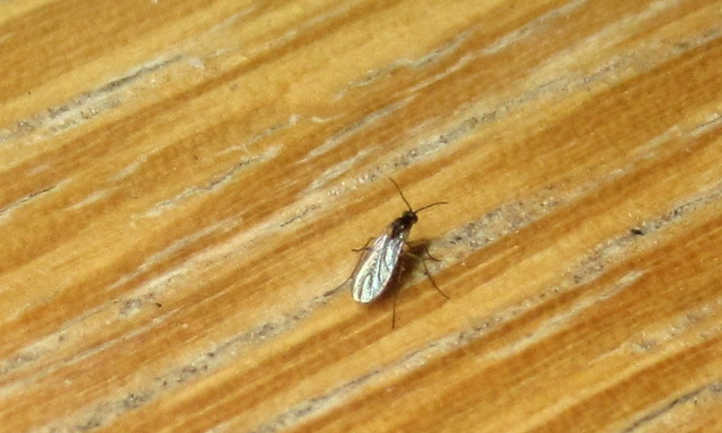
Do not overwater your growing media. Waterlogged growing medium in houseplants is a prime breeding ground for these insects. Don’t allow standing water to remain in saucers below houseplants or near growing media for long. Repair any irrigation system leaks that crop up, and keep your growing medium away from your potted greenhouse dwellers. Pasteurize the compost in your growing medium to eliminate any larvae that may be feeding on the organic materials there. Use commercial growing medium blends that have been treated with heat if you’re not into the idea of doing it yourself. Move any infected plant matter and growing medium away from others while you treat the problem.
Biological Removal of Fungus Gnats
One particular form of bacteria will destroy fungus gnat larvae: Bacillus thuringiensis var. israelensis. These bacteria are not in most commercial BT sprays but are available as active ingredients in commercial products as well. Use them to fertilize your growing media, and you should see a decline in your fungus gnat problems.
Another way to get this bacteria in your soil is by sprinkling Mosquito Bits or Mosquito Dunks over the surface and watering them in. You can use these both indoors and outdoors. They aren’t just for mosquito killing! As they break down, they release Bacillus thuringiensis var. israelensis into your soil where it can get to work killing larvae. Mosquito dunks are larger and take longer to take effect.
Beneficial nematode species can also play a major part in eradicating the fungus gnat larvae. You won’t be able to see these microscopic soil-dwellers, but they will take out the fungus gnat larvae along with hundreds of other soil-dwelling pests. For people treating an indoor plant, add these nematodes to your soil with a pot popper. Larger garden or full yard coverage can be achieved using commercial formulations, which disperse the nematodes evenly with water.
Be aware that you cannot use beneficial nematodes at the same time as your hydrogen peroxide soil drench, as it will kill the nematodes! Wait for at least a couple of weeks after the infestation and then add nematodes back into the soil. If you’re working outdoors, apply nematodes in cooler temperatures as hot weather will kill them before they can do their job. Remember repeated applications are necessary, twice per year annually.
Preventing Fungus Gnats
Inspect each plant your purchase before buying it. Check their base, gently looking through the growing medium to find signs of the clear or whitish fungus gnat larvae with a shiny black head. Avoid those with visible adults around them. To be doubly sure that they are pest-free, keep them quarantined from other plants for at least three to four weeks. This gives you plenty of time to spot newly-emerged weak fliers, as well as establish temporary control methods before they can spread.
Use yellow sticky traps to find adult gnats or raw potato slices. Since it only takes one gnat to lay potentially hundreds of eggs, you want to keep the adults at bay! For an indoor plant, yellow sticky cards (or sticky traps) work well. Outdoors, you can use double-sided yellow sticky cards or sticky traps. Trap them with a shallow container filled with apple cider vinegar as well. Finally, mulching has a good effect against fungus gnat infestation, as the mulch keeps the adults away from the growing medium. This prevents them from laying their eggs. Use a thick layer of a stone chip mulch over your potting mix.
Frequently Asked Questions

Q: How do you get rid of fungus gnats?
A: Use one of the three pesticides mentioned above or a combination of all. For particulars, check out the Biological Control section of this piece.
Q: Are fungus gnats harmful?
A: The larvae are especially harmful because they feed on roots.
Q: How do you get rid of fungus gnats in houseplants?
A: Use the Control section to determine the best course of action here.
Q: What causes fungus gnats in the house?
A: They’re usually attracted to the light in your house, and make way to your houseplants after they sneak indoors.





